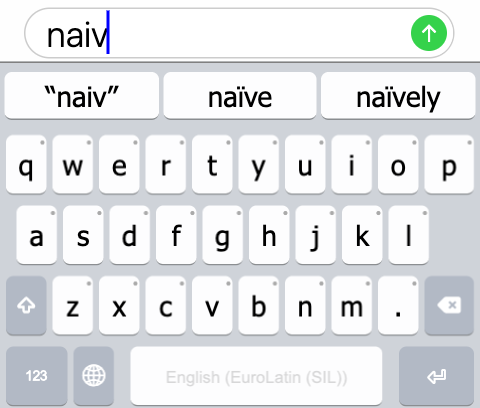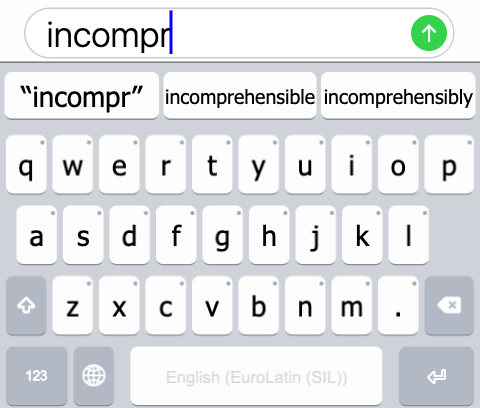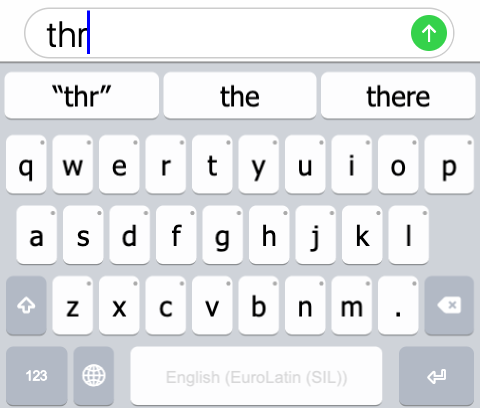What is a lexical model?

Many mobile phone keyboards enjoy predictive text for their languages.
Predictive text is the feature on your keyboard that displays a series of predictions, typically above your keyboard, that try to guess the word or words that you are typing next. For example, if I start typing the English phrase “On my w”, your keyboard’s predictive text feature will infer, using its knowledge of the English language, that the word you are typing is most likely “way”, followed by other, less likely suggestions, such as “whole”, or “website”.
The same feature that provides predictive text can also suggest corrections to what you are typing. For example, if I start typing “thr” on my English keyboard, my keyboard will suggest that I meant to type “the” instead. This autocorrect feature is powered by your keyboard’s knowledge of the current language.
The way your keyboard knows how to suggest predictions and corrections for your language is through its lexical model.

Why should I create a lexical model for my language?
Words are difficult to type

Some words have many accents, diacritics, or similar-looking forms. This is not very common in the English language, however, this is quite common in other languages. Predictive text can recognize forms without the correct diacritics, or recognize forms that are simpler to type than the orthographically correct version. This allows the typist to type words quickly, with minimum effort.
For example, in English, I want to type “naïve”, however, my keyboard does not have the ï key present on its main layout. Sure, if I use a keyboard that I can press-and-hold the i key, it may pop-up additional characters, and I can probably find ï nestled there among the other options. However, I have to go out of my way to type the correct variant, whereas the incorrect variant will be perfectly understood. In most cases, I choose the option that is more economical to type–“naive”—rather than the “correct” option.
However, a lexical model that understands the English language will see the word “naive” does not exist, but a similarly typed variant “naïve” does exist. Therefore, when I type “naive”, the lexical model will suggest “naïve”, and I can select it and have the correctly spelled version without having to long-press and select the correct “ï”. Even better than that, I can choose the suggestion right after typing “naiv”, as there are relatively view English words that start with the prefix of “naiv-”
Words are long

Sometimes, the words are very long, but can be typed in far fewer keystrokes if predictive text is used. For example, if in English, I want to write the word “incomprehensible” (a 16-letter word), a lexical model for English can predict it from the prefix “incompr” and save 8 keystrokes!
English is not prone to extraordinarily long words; the average word
length in English is about 9 letters. However, languages that are fond of
compounding, such as German (e.g., scheinwerferreinigungsanlage
is a 28-letter word which means headlight washers
),
or polysynthetic languages in which one word can have the meaning
of a complete sentence in English, such as Mohawk (e.g.,
sahonwanhotónkwahse is a 20-letter word which means
she opened the door for him again
).
For these languages, predictive text can save even more keystrokes than in
English.
People make mistakes

When typing quickly on a small phone screen, mistakes are inevitable. Say I try to write the word “the” on my phone. I press t, then h, but as I try to type e, I press a few millimeters to the right of the intended key and press r instead. With a lexical model, the predictive text feature understands that in English, “thr” is not a complete word in-and-of-itself; however, a word that is typed quite similarly, “the”, is a very common word. Therefore, the lexical model provides enough information to assume that the user intended to type “the” instead of “thr”. Thus, one of its suggestions is the correction of “the” in place of “thr”.
However, the predictive text feature is not overly presumptuous; what if the typist really did want to type “thr”? As a result, “thr” is suggested as a keep suggestion. When the typist selects the “keep” suggestion, whatever they had originally typed is kept, even if the lexical model suggests what it thinks is a far more likely correction.
What do I need to make my own lexical model?
To make a lexical model, you need some information about your language. At bare minimum, you need a list of words in your language. Keyman Developer supports importing a word list as a spreadsheet of words in your language that you wish to use for predictions and corrections. This will create a word list lexical model.
If you have such a list of words, you can continue to the tutorial to create a word list lexical model for your language!
However, to make a more accurate lexical model, you will need an idea of how to rank suggestions relative to each other. For this, you may extend the simple word list with counts. Each word has a count of how often it has been seen in a representative collection of texts in your language. For example, I could download articles from the English language Wikipedia, and count how often Wikipedia contributors have typed “rule” versus how many times they have typed “rupturewort”. This will help us understand how to rank these two suggestions given the context of “ru”.
You can extend your spreadsheet with counts (placed in the second column) to make a more accurate—and thus more useful—lexical model.




